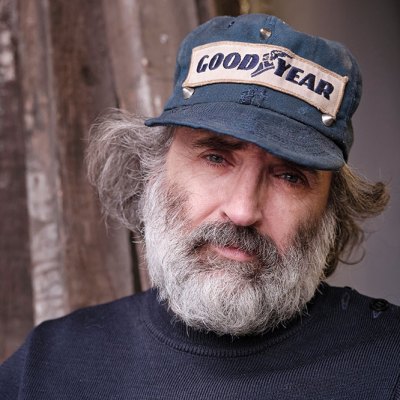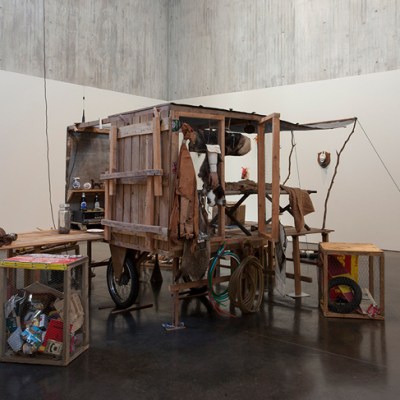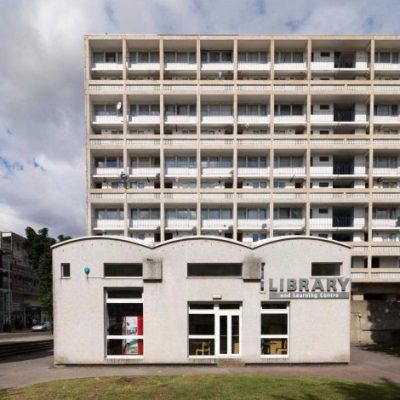In Fruitmarket’s lower gallery, a young woman and her middle-aged father are sitting on low, rough wooden benches, their backs to the photographs on the wall behind them. Enter a gallery worker, who tells them, rather awkwardly, that the benches are not for sitting on. The man politely responds that he’s been given special dispensation, owing to a cramp in his leg. The worker apologises and I return my gaze to the photographs, which show the Turkish city of Mardin covered in rubble.
This encounter speaks to my frustration with Mike Nelson’s new exhibition, ‘Humpty Dumpty’. A mash-up of two bodies of work, a transient history of Mardin earthworks and low rise, that combine photography and installation, the show feels disjointed, its thematic and formal bridges a little unstable. In an apparently immersive show, just what are these benches for if not sitting? To keep us at a safe distance from the framed photographs?
As the title suggests, the British artist, who has been nominated for the Turner Prize twice, is preoccupied with – as he puts it in the exhibition leaflet – ‘the inability “to put things back together again” once they are broken’. His show grapples with the effect of politics on cities – namely Mardin, where the streets were being dug up for the re-laying of pipes in 2012, and Elephant and Castle in south London, where the Heygate estate was demolished in 2014; here it is pictured two years before its demolition. That mild confrontation between spectator and gallery worker turns out to be a good taste of the eerie domesticity Nelson has created throughout Fruitmarket’s three spaces – the fascination and discomfort one feels as an uninvited visitor in someone else’s home.
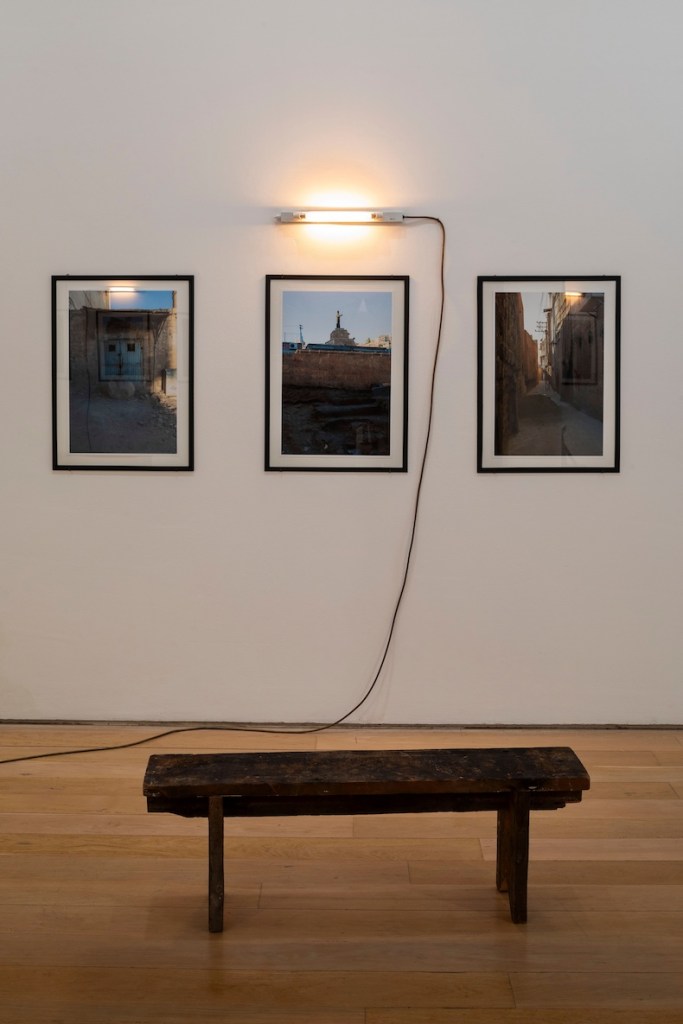
Placed at a low height, the photos of Mardin, a city near the Syrian border with a large Kurdish population, are snapshots of a moment of change and revelation. Narrow streets and staircases are adorned with excavated rocks and rubble. Exposed water pipes snaking up the frames are echoed in the lighting cables on the gallery walls. The medieval architecture is juxtaposed with the machinery and modern infrastructure that intrudes on much of Nelson’s work.
Upstairs, a film shows Nelson at work in Fruitmarket’s warehouse, which he turned into his studio for the months preceding the exhibition. With both Mardin’s ‘earthworks’ and the demolition of Heygate complete, he speaks, a little obviously, of how art can ‘invoke a vision of something that’s gone’. The artist’s talk of the disappearance of ‘the ideology that made those homes possible’ is a salient point when it comes to the Heygate, but his analysis of the ‘ambiguous’ political traction at work in Mardin’s infrastructure redevelopment is far less developed.
The downstairs photographs, therefore, recede into memory as something entirely separate as we enter low rise, a collection of large photographic prints of the Heygate mounted on timbers and steel girders. Along with the fruit machines and battered St George’s Cross shields that adorn some of the works, these hefty frames bring the prints into three dimensions. The semi-reflective Perspex covers allow us to superimpose ourselves upon the works, which feels akin to entering these settings as ghosts.
One striking image depicts a staircase littered with lampshades, wastepaper and bin bags. A string of lamps look a little like Mardin’s water pipes, and highlight specific areas of grime, much like how councils and developers – in the Heygate and other estates – have identified defects in order to justify the demolition of structurally sound buildings.
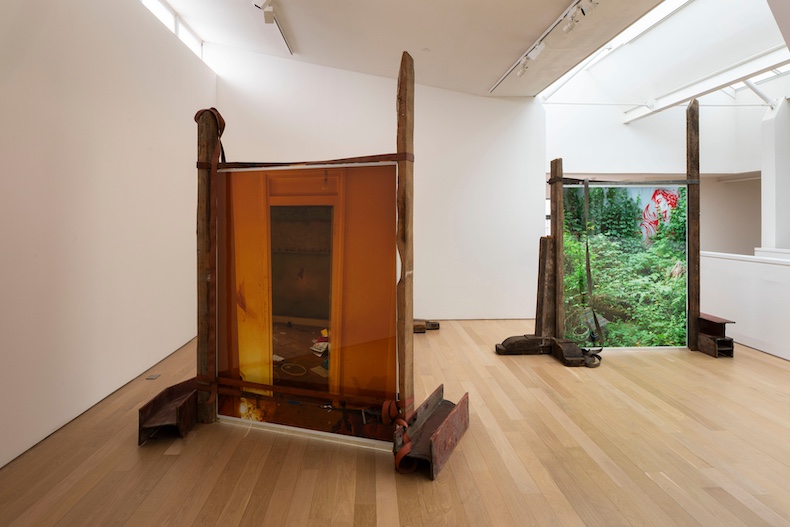
Yet it is in the warehouse, the most recent addition to the Fruitmarket complex, where Nelson’s show really comes to life. Last summer, Ibrahim Mahama filled this space with railway tracks and paintings of Ghana’s colonial-era locomotives, making full use of its vast ceiling height and musty odour. In contrast, Nelson has turned the space into a life-size reconstruction of a Heygate flat. We now enter a cramped hallway through a juddering metal door: on the left is a cracked mirror, a battered Alpine landscape print and an exposed wall of dry rot; to the right a cardboard box.
Inside the living quarters, details observed by Nelson in the real Heygate estate are painstakingly reconstructed using ephemera from the artist’s decades-old collection. At first, it feels like stepping into a home; moving through, it becomes clear that this is a working studio as much as a flat, complete with paper cuttings and the very printer that produced the prints upstairs. Just as quickly, Nelson throws us back into unease with a dead-end staircase and a metal grille that looks out into the darkness of the outer warehouse. It’s everything installation art should be: immersive and tangible, yet offering existential discomfort too.
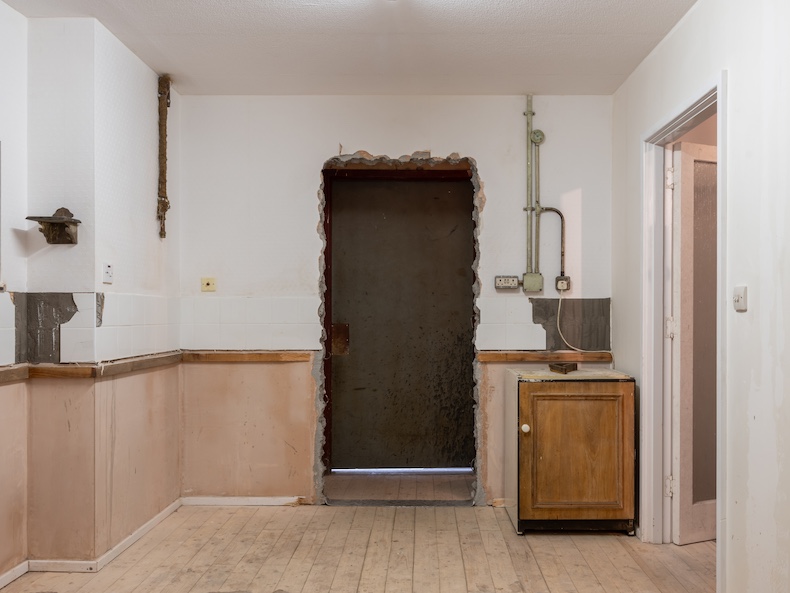
In both the film and a framed text, Nelson refers to ‘On Exactitude in Science’, a short story by Jorge Luis Borges in which a one-to-one scale map of an empire is commissioned – before both decompose in concert. Yet Nelson’s art appears to be doing the opposite: enhancing the reality of places that no longer exist.
He says his show ‘attempts to circumnavigate and make sense of the intersections of our lives within wider world history’. Amid a lot of jargon, ‘attempt’ is the operative word: perhaps the things that cannot be put back together were only ever unified in Nelson’s head. His political analysis of construction and demolition still seems still to be grappling for its conclusion, but he has nonetheless pulled off a philosophical and sensory feast.
‘Mike Nelson: Humpty Dumpty. a transient history of Mardin earthworks. low rise’ is at Fruitmarket, Edinburgh until 5 October, as part of the Edinburgh Art Festival.

